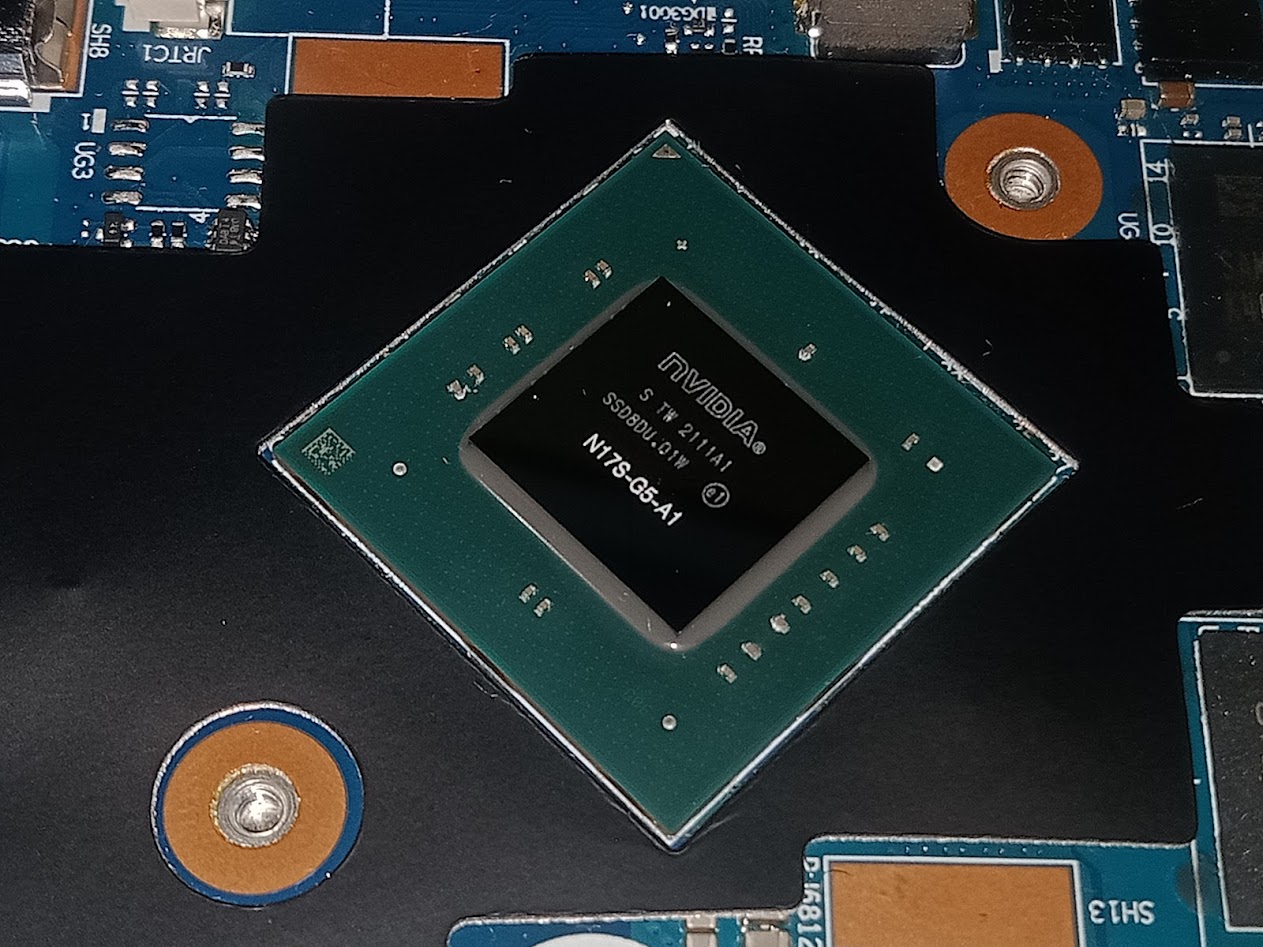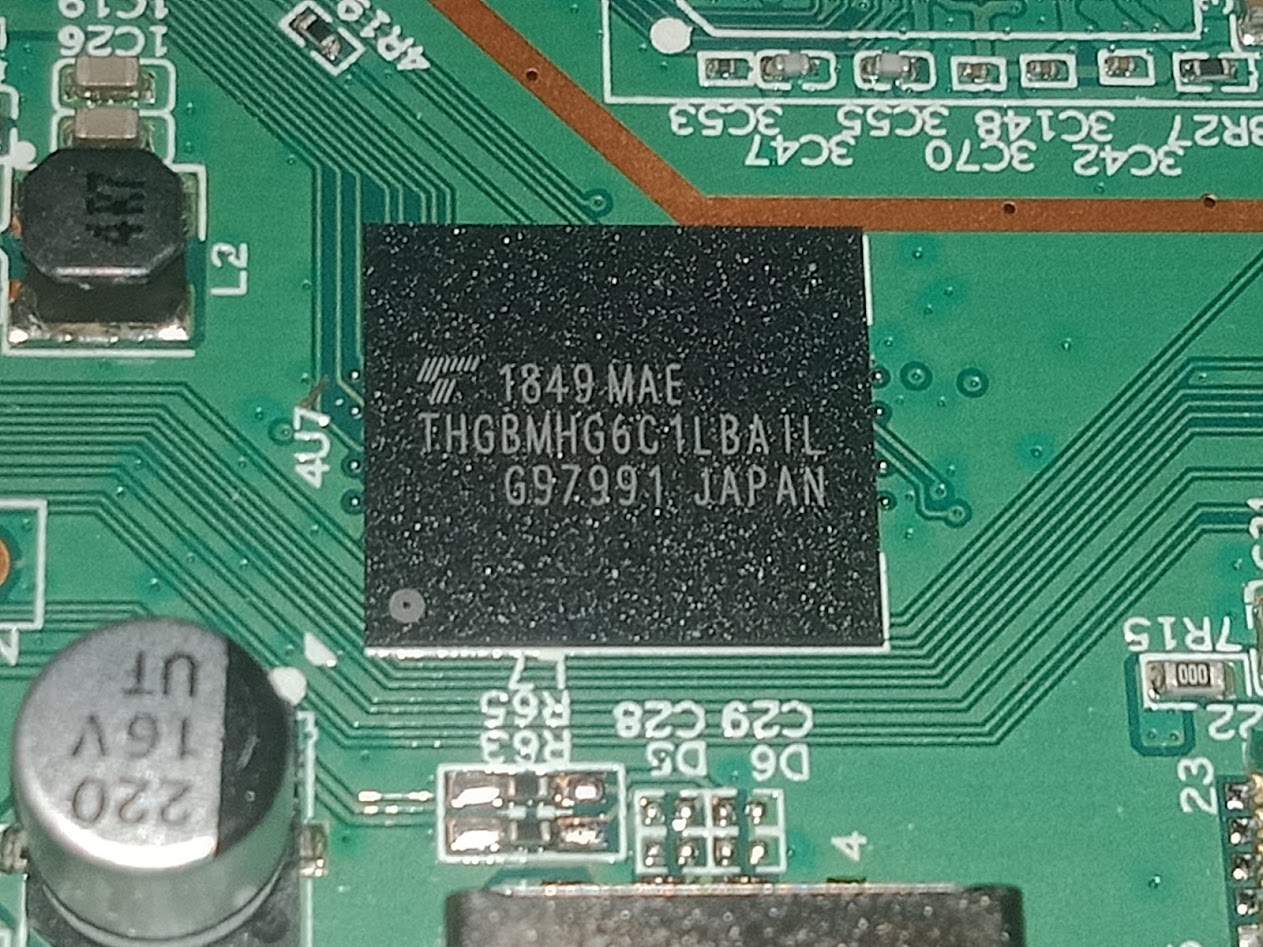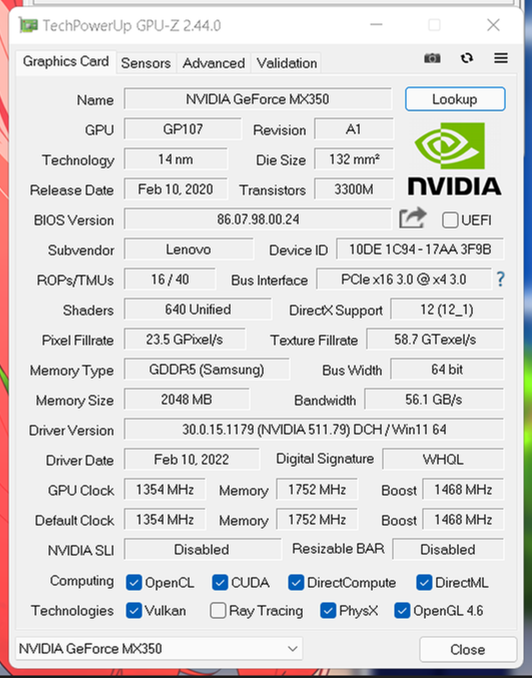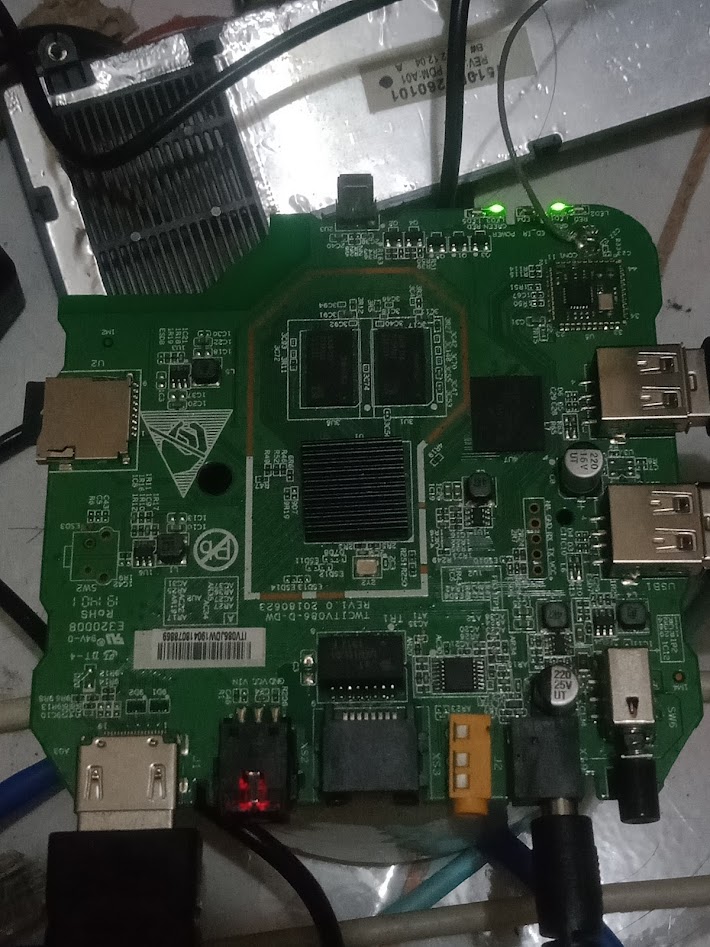Comparing: GeForce MX350 [Disk] vs KIOXIA THGBMHG6C1LBAIL
In this comparison, we analyze two Disks: GeForce MX350 [Disk] and KIOXIA THGBMHG6C1LBAIL, using synthetic benchmark tests to evaluate their overall performance. This side-by-side comparison helps users understand which hardware delivers better value, speed, and efficiency based on standardized testing. Whether you're building a new system or upgrading an existing one, this benchmark-driven evaluation offers valuable insights to guide your decision.

GeForce MX350 [Disk]
| Type: | Disks |
|---|---|
| Model: | GeForce MX350 [Disk] |
| Capacity: | 2GB, 1.5GB |
| Interface: | GDDR5 |

KIOXIA THGBMHG6C1LBAIL
| Type: | Disks |
|---|---|
| Model: | THGBMHG6C1LBAIL |
| Capacity: | 8GB |
| Interface: | BGA153 |
Specification Comparison Table
This specification comparison presents technical details of several devices or components to help you understand the key differences between each option. Use this table as a reference to determine which device best suits your needs.
| Specification | GeForce MX350 [Disk] | KIOXIA THGBMHG6C1LBAIL |
|---|---|---|
| Brand | Samsung | KIOXIA |
| Format | VRAM Disk | eMMC 5.1 |
| Capacity | 2GB, 1.5GB | 8GB |
| Interface | GDDR5 | BGA153 |
Submission Comparison Table
This submission comparison table displays the number and details of benchmark data submissions from various devices or components. This information helps you understand the performance based on the benchmarks that have been tested, as well as providing an overview of the consistency and popularity of the available benchmark results.
Submission Comparison Chart
This chart visualizes the benchmark scores comparison between two hardware devices based on submitted data.
Media Gallery
A collection of photos of tested hardware. These images can help you identify the physical form, model, and variant of the hardware in question. These photos are from our own documentation, and if they are not available we may not be able to document them.
About Hardware GeForce MX350 [Disk]
The NVIDIA GeForce MX350 is an entry-level GPU designed for thin and light laptops, delivering significant graphics performance improvements over the processor's built-in iGPU. The GPU is based on the Pascal architecture with 640 CUDA Cores, and features 2GB or 4GB of GDDR5 memory with 64-bit bus width. The MX350 is generally used for light graphics tasks such as photo editing, light video, and casual gaming, and provides GPU acceleration for CUDA-enabled creative applications.
But in this particular test, a portion of the video memory (VRAM) on the GeForce MX350 was configured as a VRAMDisk. The concept of a VRAMDisk is similar to a RAMDisk, but it uses the VRAM of the GPU as a super-fast storage medium. VRAMDisk allows the creation of temporary, high-speed drives that can be utilized for technical experiments, speed testing, or graphics caching in certain scenarios. Although its capacity is limited and volatile (data is lost on reboot), the high bandwidth and low latency of VRAM provide compelling performance in certain contexts.
The tests were conducted on a Lenovo IdeaPad Slim 3i 14ITL6 laptop with Intel Core i5-1135G7 processor, 12GB DDR4 3200MHz dual channel RAM, and Windows 11 22H2 operating system. The VRAMDisk was created from a 2GB GeForce MX350 GPU, with virtual disk sizes of 1GB and 1.5GB, using special software called GPU RAM Drive.
Benchmark results with CrystalDiskMark recorded read speeds of 1113.58 MB/s and write speeds of 995.48 MB/s, showing the high bandwidth potential of VRAM as a temporary storage medium. Although the performance does not match DDR4-based RAMDisks, VRAMDisks remain a unique and attractive solution for certain technical purposes, especially for users who want to utilize idle VRAM for fast I/O processes. With its dedicated laptop GPU form factor and PCIe x4 Gen 3.0 interface, the GeForce MX350 VRAMDisk opens up new exploration possibilities in the world of experimental graphics-based high-speed storage.
Device test (testbed):
Device: Lenovo IdeaPad Slim 3i 14ITL6
CPU: i5 1135G7
RAM: 12GB DDR4 3200MHz Dual Channel (8+4)
OS: Windows 11 22H2
Friday, 06 August 2021 04:34:19 | Update: 1 month ago
About Hardware KIOXIA THGBMHG6C1LBAIL
The KIOXIA THGBMHG6C1LBAIL is an 8GB eMMC (embedded MultiMediaCard) storage module designed for use in small electronic devices such as smartphones, tablets, set-top boxes (STBs), IoT devices, and other embedded systems. Featuring the latest 3D NAND flash technology from KIOXIA (formerly Toshiba Memory), it offers a blend of performance, power efficiency, and long-term reliability.
As part of the eMMC 5.1 standard, the KIOXIA THGBMHG6C1LBAIL delivers improved read and write speeds over previous generations, while maintaining low power consumption. The module combines NAND flash and controller in a single package, simplifying integration in embedded systems and shortening product development time for manufacturers. With a compact and power-efficient design, this storage is perfect for devices that require a small footprint and high durability, without sacrificing performance stability.
In tests conducted on the FiberHome HG680P device (IndiHome STB) which uses an Amlogic S905X SoC, Mali-450 MP GPU, and 2GB of RAM, the KIOXIA THGBMHG6C1LBAIL showed a pretty solid performance for the eMMC 5.1 category. Based on the PassMark Performance Test (Disks) benchmark, the read speed reached 55.9 MB/s, while the write speed recorded 22.8 MB/s. In the Cross Platform Disk Test (Mobile), the read speed stood at 37.65 MB/s and write 20.44 MB/s. These results reflect the eMMC's capability to run basic applications, video streaming, system boot, and other light tasks consistently.
Overall, the KIOXIA THGBMHG6C1LBAIL is an economical yet reliable embedded storage solution, ideal for entry-level to mid-range devices that require well-performing, efficient, and stable internal storage. Backed by KIOXIA's big name in NAND flash and memory technology, this eMMC is a great choice for embedded system projects and low-power consumer devices that require efficiency without sacrificing quality.
Device test (testbed):
Device: FiberHome HG680P (IndiHome TV Box)
CPU: Amlogics 905X
GPU: Mali 450 MP
RAM: 2GB
Storage: 8GB
Monday, 24 July 2023 10:09:52 | Update: 1 month ago


